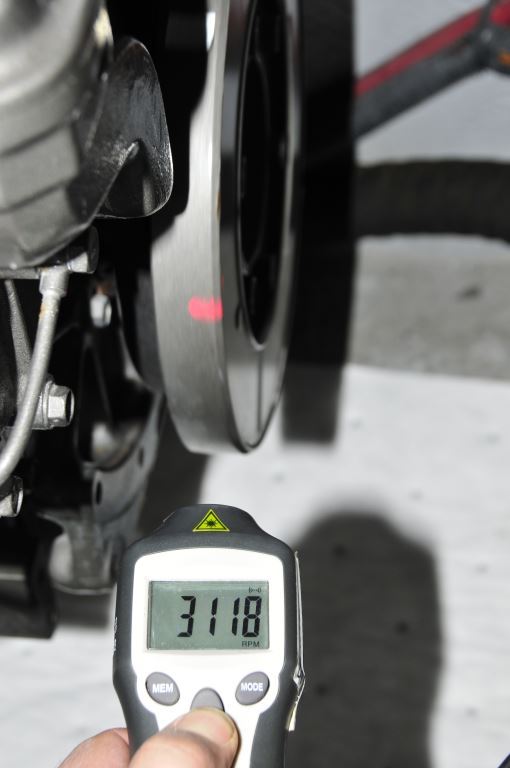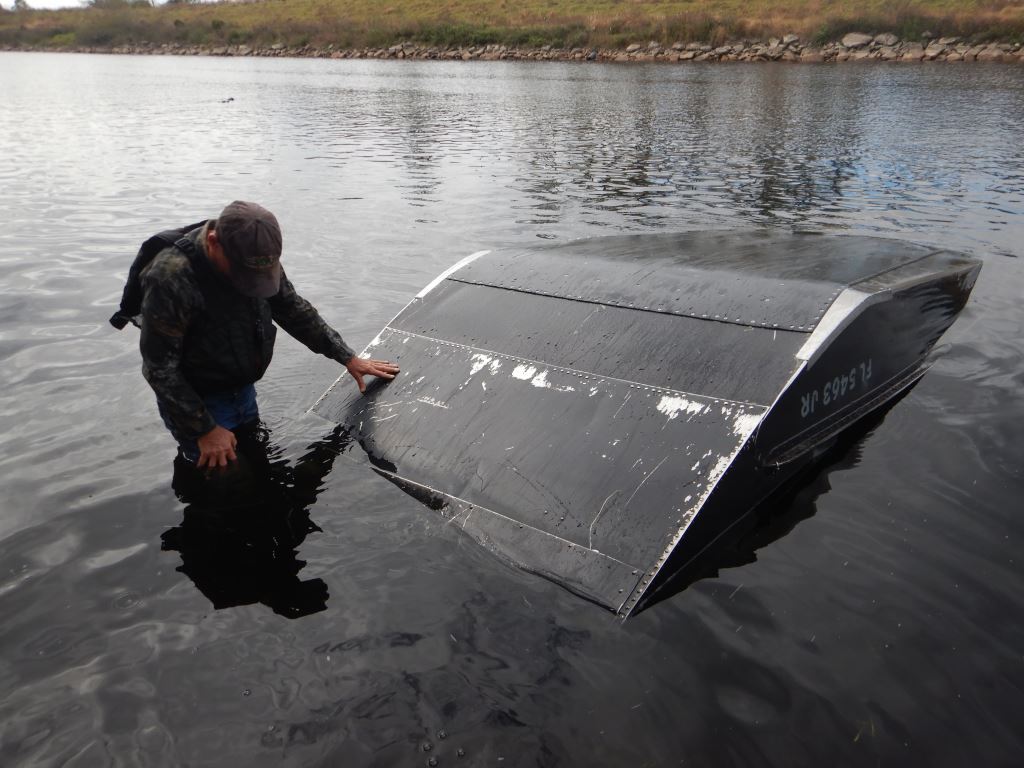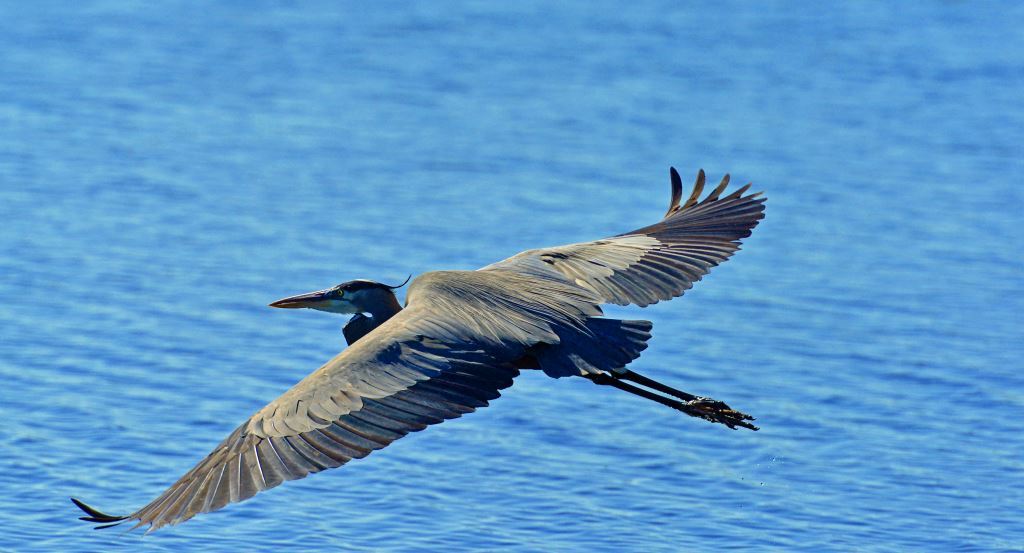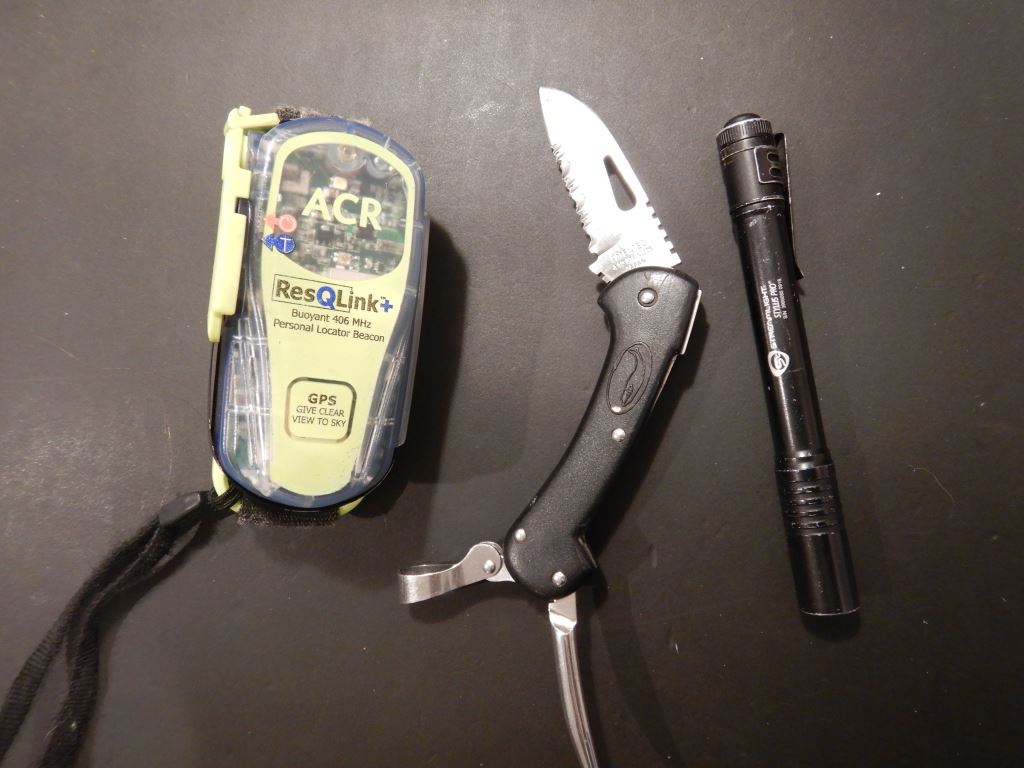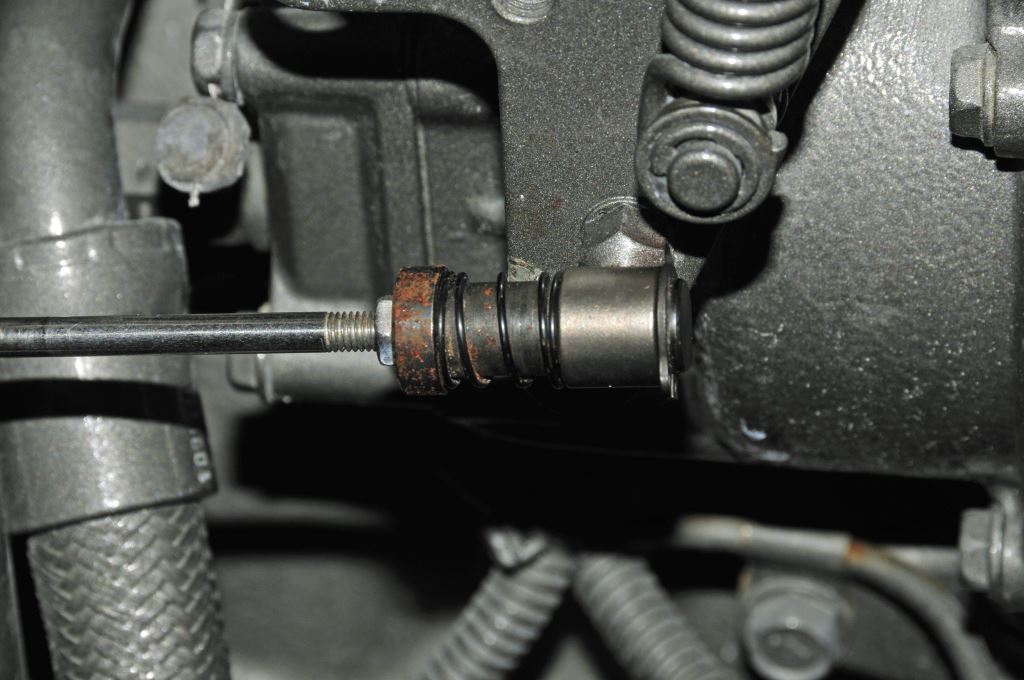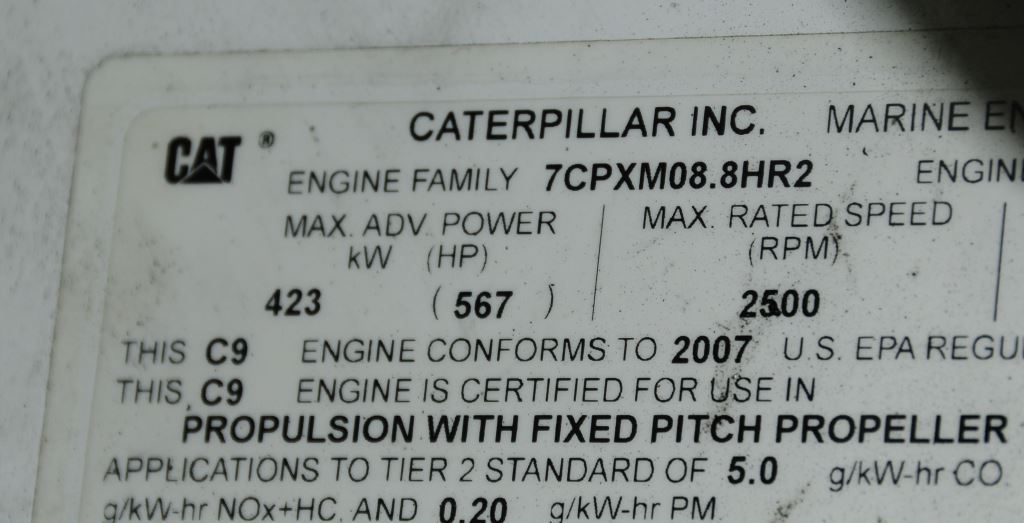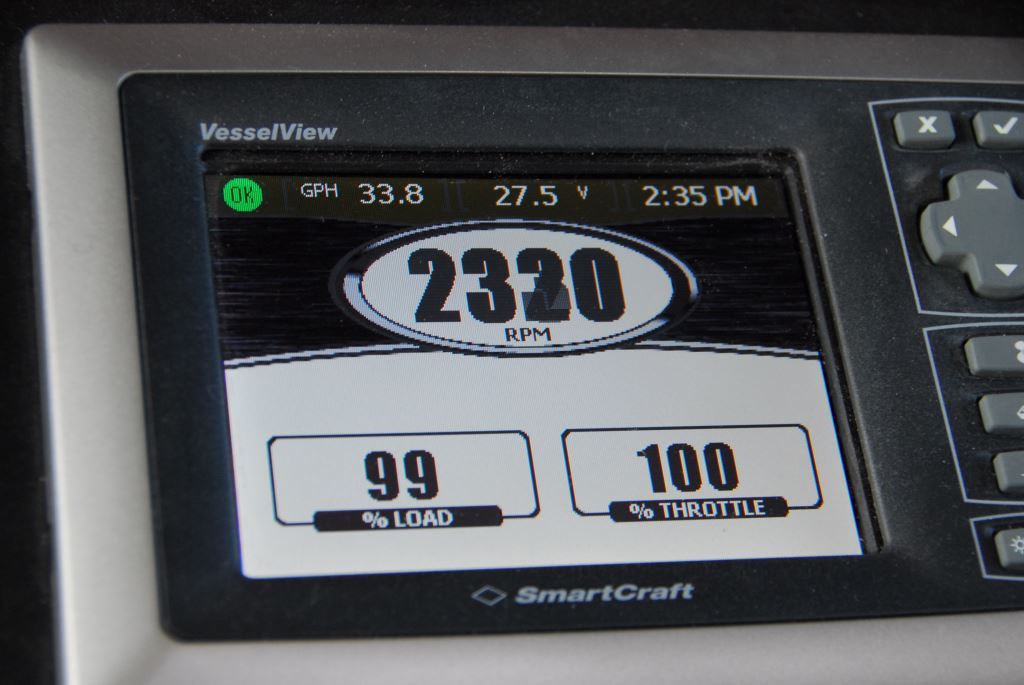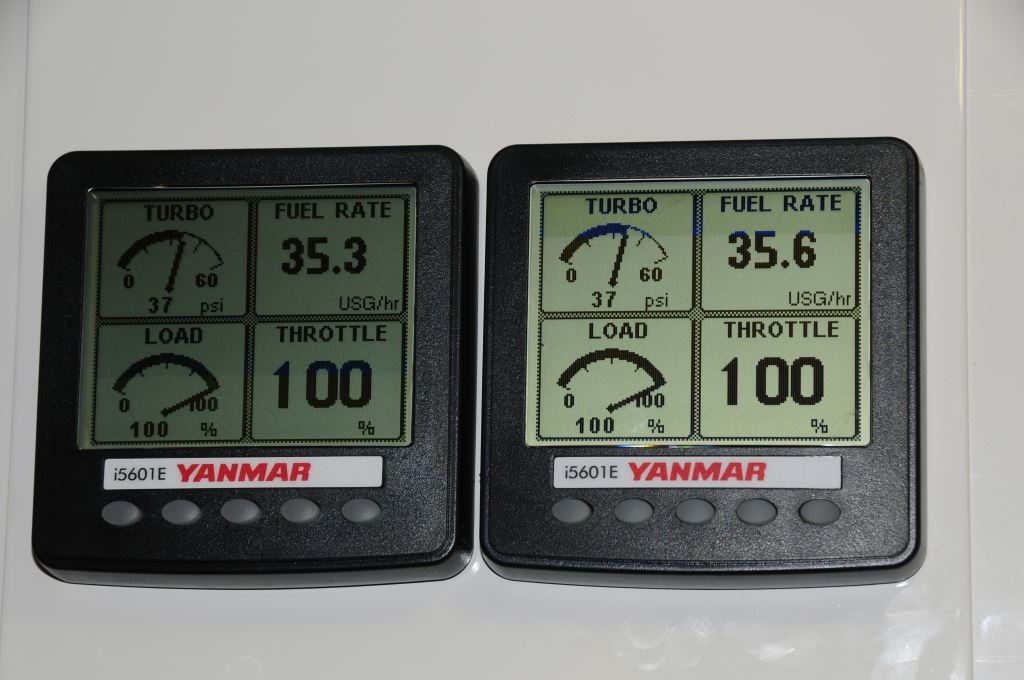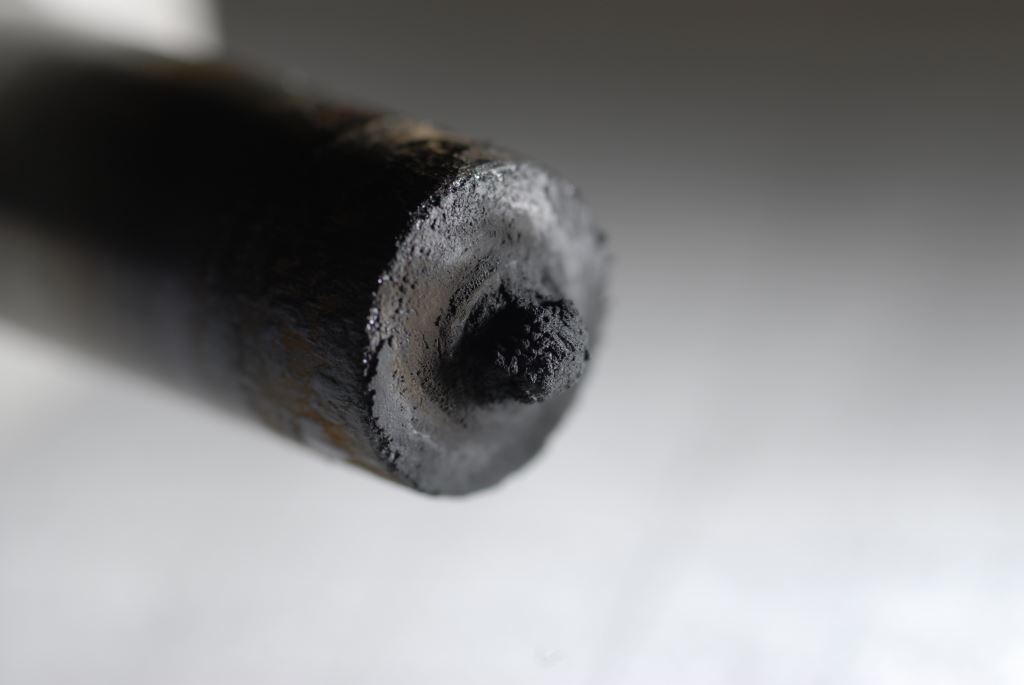Text and photos © 2022 Steve D’Antonio Marine Consulting, Inc.
From the Masthead
“We’re going over”, with those words my world was turned upside down, literally.
I’ve been fortunate to travel far and wide in pursuit of both work and pleasure, from above the Arctic Circle to below the Antarctic Circle, to within 600 miles from the North Pole, Greenland’s ice cap, the wilds of Tasmania, the Great Wall of China, Taiwan’s rugged mountains, Iceland’s coast and interior, the Aleutian, Galapagos, Faroe, Falkland, S. Georgia and Svalbard Island groups, the Panama Canal, Malta, and Normandy’s beaches, to name a few. I’m a wanderlust to be sure, I’ve flown well over 2 million miles, and along the way I’ve been able to satisfy my second passion after the maritime one, photography, with birds being a subject of special interest for me. I’ve crawled over miles of wet, muddy ground, through slush and snow, fallen through snow banks, subjected myself to innumerable insect bites and poison ivy, sunburn, frostbite and other discomforts in pursuit of the perfect puffin, eagle, albatross, penguin, owl, hawk or hummingbird image. There’s not much I won’t do in pursuit of this passion.
Florida in winter is an ideal location for bird photography, as it represents one of the world’s most heavily travelled migratory avian byways; if you time it right it’s hard to not be presented with a trove of potentially wonderful images. In this case I accepted an offer from long-time friend and master diesel engine surveyor Tim Caruso, to cruise on Lake Kissimmee. I’ve known and worked with Tim for many years, and when I say he sets the standard, it’s no exaggeration, and while I’ve worked with a number of talented engine Tim’s knowledge, experience and delivery are peerless. In addition to being a mechanic’s mechanic, Tim is also a superb airboat operator, he’s run the one he own (it was his father’s) for decades, and he knows Florida’s airboat waterways, from its countless lakes to the Everglades, like the proverbial back of his hand, I’ve never seen him consult a map or GPS and yet he always gets us to the destination and back, on schedule.
First Light and Final Flight
We set off on a Sunday morning in early December, into glorious sunshine, whose warm glow is the thing a photographer’s dreams are made of, and almost immediately begin encountering birds; I lift my familiar and well-worn Nikon D800, 70-200mm, 2x teleconverter set up, and press and hold the shutter release, capturing multiple images of a snail kite (they are endangered, and limited to central and south Florida, making this a special treat) in flight. Although they are mostly native rather than migrating, the bird life is abundant never the less, along with several close-up alligator sightings.
Capturing birds in flight is challenging, requiring intimate knowledge of the camera’s controls, a balance of a quick focusing lens, relatively high shutter speed, the proper ISO setting, and control of depth of field; all of which vary with lighting conditions. Based on my quick review of the photos I’m shooting, I’m in the zone, the images are sharp and properly illuminated, even if “keepers” are only one in ten, “film” is free; I’m giddy.
After about 2 hours of cruising the perimeter of the lake we enter a canal that takes us to an adjoining lake. I relish the cool underway breeze, while taking in the scenery, the picturesque cypress tree-lined canal, which is about 50 yards wide, from the boat’s front observation seat; Tim is perched aft of me in the driver’s seat.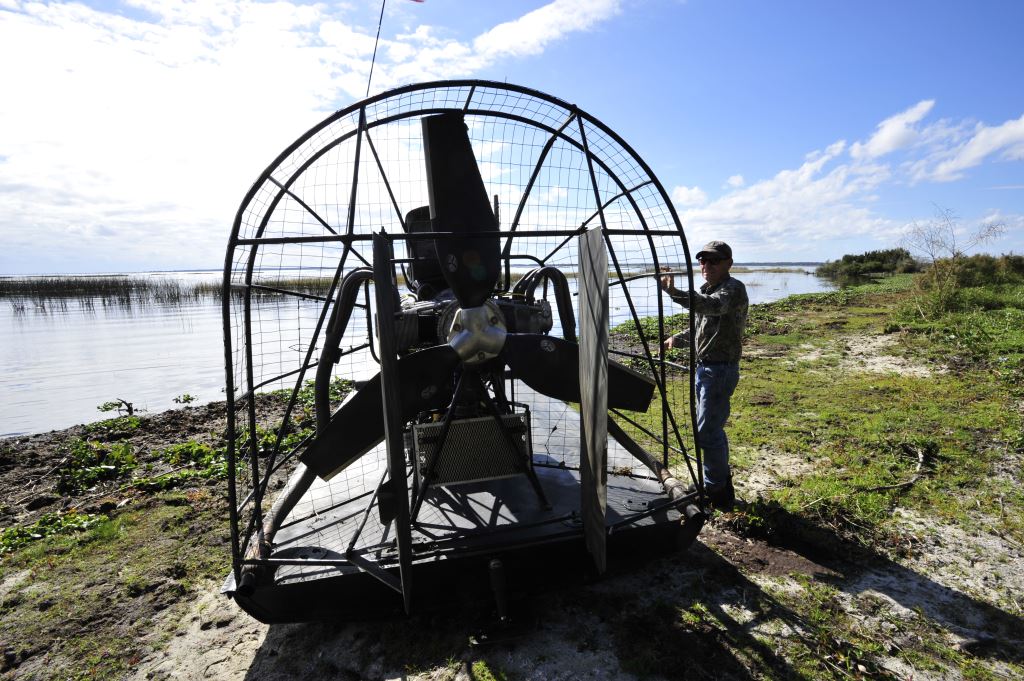
Setting off on that fateful and otherwise idyllic morning; Tim and I had little idea what was in store for us.
At full speed the transit of the canal would normally take minutes, however, as we’d soon find out, this would be anything but a speedy transit.
We’re Going Over
Without warning, the boat’s engine dies, no sputtering, hesitation or decreased rpm, from full throttle to nothing in the veritable blink of an eye. It occurs so quickly I’m certain Tim has shut it down intentionally, in order to coast up on a wildlife photo opportunity. I turn and looked at him with a quizzical glance, expecting him to point toward something of interest, but instead he simply shrugs, indicating he’s done nothing to cause this.
With their high-mounted engines, this craft uses a 6-cylinder air-cooled Lycoming aircraft power plant, (with twin redundant ignition systems), and thus high center of gravity, airboats are only marginally stable, though much more so in shallow water, where they generate a pressure wave between the hull and the bottom. In deep water that cushion is eliminated, making our scenario all the more precarious.
Airboat rudders are aft of the large propeller, they work much like the rudder on an aircraft in that they operate in the air rather than the water. As soon as the engine quits, and the prop grinds to a halt, the rudders become useless appendages, and with that the boat quickly yaws to port, causing that side of the hull to rise, with an opposite effect for the starboard side. I look back at Tim once again he says, with absolute composure, “We’re going over”. I instinctively step off my seat toward the high side in a feeble attempt to counter the heel, and in doing so wedge my foot between the seat bracket and a storage box; as the hull continues its inexorable roll, it takes me into the water with it; as I’m being dragged beneath the surface only two thoughts cross my mind, and surprisingly fear is not one of them. The first, I’ve traveled all over the world, embarking on many perilous adventures, from photographing both polar and grizzly bears, to traversing long, dark, caved-in and abandoned Taiwanese mountain rail tunnels, and I’m going to drown in Florida canal? The second, I’ve humped my camera gear by sea and land, where I’ve been drenched by frigid, driving rain, enveloped in volcanic ash, and doused with salt spray, I’ve dropped and fallen on cameras, and unknowingly set them down in puddles, damaging them but never beyond repair. The two cameras I have slung diagonally across my chest, along with a full camera bag of bodies and lenses, represent my very best wildlife photography gear, and now it was not only wet but submerged, and ruined, I am furious.
From the time the engine stops, to the moment these thoughts enter my incredulous mind, no more than five- or seven-seconds pass, it isn’t violent, but it is rapid and unyielding; on plane, off plane, roll, swimming, it is that fast. As the boat continues to roll, pulling me further under, I reach down to feel my left boot, to determine how it is jammed in place. I realize pulling it upward is in fact wedging it tighter into the gap in which it is lodged, pushing it down quickly allows me to separate myself from the boat and swim free.
I’m not wearing a personal floatation device (Tim is wearing his and had dutifully given me one, which I promptly slung over my seat back, wearing it interferes with my cross-body camera straps); however, in my weak defense, having done this before, I never anticipated being in water that was more than knee deep at most, much less over my head. Also, anticipating having to get out of the boat to push when getting stuck, which has already happened twice this morning, I’m wearing hiking boots. I’m an excellent swimmer, however, doing so with 20 lbs. of cameras, fully clothed, and wearing boots, is no easy task.
Fortunately, once capsized, the boat remains afloat; Tim and I cling to it and swim, pushing it to the shore, which is thankfully only about 25 feet away (like most airboat operators, Tim has been hugging the shore seeking, but not finding, shallow water). The propeller’s cage, now pointing downward, hits bottom before we fully reach the shoreline. However, we are close, he and I stand up, wet, cold and bedraggled, staring at each other in disbelief, while holding the boat to prevent it from slipping back out into the canal and sinking all together.
The scene of our “wreck” is otherwise bucolic, serene even, and under other circumstances photogenic, a tree lined canal and grassy levy, the sun is shining, birds are singing, it is surreal, desolate, deserted, there isn’t another soul in site. I have an underwater point and shoot camera, a Nikon W300 in my pocket, I take it out and capture one image of Tim, standing in the water, forlorn, resting his hand on the boat’s upturned hull as if to comfort it, it’s the last image that camera ever captures, as it too floods shortly thereafter.
Tim communes with his capsized craft (this is the last image this camera ever captures).
I tell Tim to go up onto the shore, there is no sense in us both standing in the water. While waiting, I dive under the boat several times in an attempt to retrieve one of our phones, both of which are stored in plastic bags, which we hope to use to summon help. Visibility in the stygian canal is near zero, however, with the aid of my light, which I carry in a holster on my belt, I’m able to see my messenger bag, which, along with my camera bag, is strapped in place with bungy cords. My phone is in a zippered compartment in that bag, which I’m certain I’ve closed, in a zip-lock bag, along with my wallet and rental car keys in a zip-lock of their own. I pull on the bag hoping to slip it out from under the cords; I’ve done too good a job securing it, as it will not budge; finally, I cut the cords using my pocket knife. I quickly rifle through the bag but the phone is nowhere to be found, I am at once livid and disbelieving. Pulling the bag as hard as I do apparently causes the zipper to open, plunging the phone into the canal’s murky depths, I never see it; mercifully the wallet and car keys remain (the bag they were in had trapped air, making it slightly buoyant, so it floated upward into the upside down bag), but they do me no good. My kingdom for a phone…
However, all is not lost, out of the messenger bag comes a gift, my black raincoat, which I wring out, and give to Tim, he’s begun to shiver, instructing him to lay under it while sitting in the sun. I have a Personal Locator Beacon in my camera bag, which remains submerged and strapped in the boat, and I’m certain it too is zippered shut, I’m careful not to pull on it, causing a repeat dumping performance. I’m reluctant to use the beacon unless absolutely necessary, but before I can even make that decision, I need to retrieve it; I dive under the boat once again, locate the camera bag, carefully cut the bungie and drag it ashore. During all this time in the water I only briefly consider the alligators we’ve seen, and venomous snakes I know are endemic to these waters; I’m simply too distracted.
As I surface with the waterlogged camera bag, I notice a small plastic baggy floating next to me, in it is a box of matches, it’s the first God-send of the day. I bring both ashore, open the camera bag and the visage of more wet gear makes my heart sink, while the locator beacon on the other hand is a welcome sight. The shoreline is littered with bone-dry cypress branches and Spanish moss, which provide fuel and kindling for a fire. With that going, and Tim warming himself, I remove the batteries and memory cards from the cameras, thinking I may be fortunate enough to at least salvage some of the images I captured during the morning’s run.
Thirty minutes have passed since the capsize when I hear an outboard motor. A young man, and a very large dog, arrive in a very small skiff, “looks like y’all need some help” the occupant says. The understatement of the year. Hunter (yes, that’s his name) and his dog are hog hunting, and while he finds no hogs this day, he does find us, he is the day’s second God-send.
Borrowing Hunter’s phone Tim calls 911, he tries to explain to the operator where we are but she has no idea, eventually she patches him through directly to an Osceola County Sheriff’s deputy, a 38-year veteran as it turns out, and with their shared local knowledge he says, “I know exactly where you are but it will take me an hour to get there, there’s no road, I have to drive over the levy, hold tight”, and so we wait.
After he knew help was on the way, Hunter could have gone back to hunting, however, to his credit he not only stays with us; he says, “I’m going to call my daddy”. “Oh, OK, can he help?” I ask. “Yup, he’s sunk airboats and got’em back up, he can help”. While waiting for Hunter’s father I continue to sort through our drenched supplies, and camera gear, salvaging some food and water, Tim and I split an energy bar. As we wait a number of bass boats pass the capsized airboat scene, and our small pitiful party, not only do none stop, they don’t even slow down, I’m incredulous.
Roughly an hour passes when Hunter’s father, Jason, along with friend Chris, arrive in a 20-foot SeaArk center console, ready for battle, they are equipped with come-alongs, straps and lines. He quickly surveys the scene and wastes no time getting to work righting the capsized boat (Tim also calls Sea Tow, they agree to come to the scene, the following day, for $3,000). Hunter willingly volunteers to assist, diving into the water to secure a line to the boat’s cage to afford righting leverage. We all take turns cranking and repositioning the come-alongs to trees, and slowly the boat returns to an even keel. Other than being wet, the boat is unscathed. Jason and Chris are the day’s third God-send.
The sheriff arrives about this time and after some hesitation agrees to allow us, with the caveat, “if you tear y’alls boat up it’s on you”, to use his front bumper-mounted winch to drag the now righted airboat further up onto the shore, so it can be pumped out. As the boat is dragged shoreward, I’m amazed to see water exiting the bilge pump discharge, the pumps are running in spite of the battery having been submerged for hours. Tim and I remove the hull hatch and he retrieves a portable bilge pump and spare battery, which I hook up and thrust into the bilge to accelerate the pumping process. As the salvage process continues more bass boats zoom past us, Jason shakes his head, and says, in so many words, that there is a not so friendly “rivalry” between local bass and air boaters. I’m surprised, in my world there are no barriers between mariners in need and those who can assist; regardless, I’m thankful for Hunter, Jason’s, Chris’ and the Sheriff’s efforts.
Tim monitors dewatering, the chain leading from the bow is connected to the truck’s winch.
Once righted and pumped out Jason offers to tow the boat to the nearest boat ramp, which is roughly a half hour ride; Tim rides the tow to mind the pumps, while I ride with the sheriff. His truck is “cluttered”, chock-a-block with law enforcement, and rescue gear, including a high mounted laptop that flails about with each hillock we traverse, I instinctively reach out to steady the screen; I share my seat with a nickel-plated Remington shotgun, with a stock-mounted bandolier. Between taking calls, he regales me with tales of his near-four-decade rural Florida law enforcement career; it seems he knows the county and everyone in it. I long for my camera as our wilderness jaunt offers up deer, turkey and fox.
After arriving at the ramp, it’s 7PM, we secure the boat, bid farewell to, and thank once again, Jason, Chris, and Hunter; the sheriff then transports us back to Tim’s campsite and motor home, where the day’s saga began. Tim is chilled once again from his ride on the tow, in wet clothes, after sunset. The sheriff gives him a blanket and I crank up the heat. When we arrive, a neighboring camper walks up and tells us he’s heard about what happened, he asks if we are OK or if we need any help. Tim and I share some details and assure him that other than wounded pride, and a wet boat and camera gear, we’re no worse for the wear.
Prior to taking this trip I asked Tim what I should bring. His response was the same as previous excursions, “A change of clothes”, I’ve never needed them, but like seat belts you wear but hope you’ll never need, I bring them; this time I’m glad I did, it feels liberating to strip off damp, muddy clothes and soggy boots I’d been wearing for hours. Tim prepared a crockpot before our morning departure, and so before returning to the ramp to retrieve the boat, we sit down to piping hot stew, we’re both ravenous; a meal was never so restorative.
Bird life abounds, and thankfully these and all the other images captured that day survived immersion.
After eating we set out to rig up the trailer to the motor home, and as we do so, the camp neighbor returns to offer help. Once he realizes we’re preparing to make the drive back to the boat ramp using Tim’s motor home, he immediately insists that we allow him to drive us and the trailer using his own truck. Until now he is a complete stranger to us. I silently say a prayer of thanks, the thought of getting the motor home underway, with the trailer, in the dark, after the day we’ve had, is daunting. This good Samaritan represents the final God-send of the day. With the boat back on the trailer and returned to the campsite, I set off for my hotel, it’s 8:30PM.
Lessons
Vernon Law’s axiom “Experience is a hard teacher because she gives the test first, and the lesson afterward” is apropos of this event. While this adventure was an unwelcome one, it was not without some benefit; having had several weeks to reflect on these events, I’ve considered the many lessons learned. Among others…
- As the day began, I had my phone, ensconced in a waterproof bag, in my trousers’ pocket, I later moved it to my messenger bag for “safe keeping”. In hindsight, I should have kept it on my person.
- Always carry a knife. Other than when prohibited from doing so, I’m religious about carrying. Mine is a now obsolete small folding Myerchin rigging knife with serrated blade, built in red LED light, marlin spike and pocket clip. I keep it sharp using a tool designed for serrated blades.
- Ditto for a flashlight, I carry a Streamlight Stylus Pro, in a belt holster, I’m never without it, and it’s never let me down.
- Something as simple as a box of dry matches can make a significant difference, psychologically as well as physically, being able to build the fire was as therapeutic as being warmed by it.
- For cruising, hiking, and small boat work in remote areas, carry a Personal Locator Beacon, they are small and inexpensive.
- Even under the most benign conditions, assume the worst can happen, quickly; so, wear a PFD.
- Finally, never underestimate the generosity of strangers; without Hunter, Jason, Chris, the sheriff and our camp neighbor whose name I never knew, things would have almost certainly turned out differently, and not for the better.
All of the camera memory cards survived intact, along with the images recorded on them, so not all was lost, some are included here. All of the camera bodies and lenses were total losses, they were insured and the insurer has already replaced the three SLR bodies and one lens, the remaining three lenses are, unsurprisingly, on back order. Three of the rechargeable batteries would no longer charge, four others survived. The other gear of value in my camera bag was for the most part salvageable after cleaning and drying. Just before I left my hotel room on that ill-fated morning, I removed my tablet from the outer pocket of my camera bag, where it usually lives.
Essential items, a Personal Locator Beacon, pocket knife and (waterproof) flashlight. The latter two should be carried at all times.
After lubricating and drying out the engine and magnetos, Tim reports the airboat’s engine started with no problem and ran at high idle for an hour in his driveway, and so its sudden failure remains a mystery, although the problem may not manifest itself until run under sustained load. If it was water in the fuel, the evidence would have unfortunately been lost with the capsize.
Wide Open Throttle. Do You Get It?
Failure to reach an engine’s rated wide open throttle rating could be caused by something as simple as a misadjusted throttle cable.
A few years ago, I was carrying out a sea trial aboard a single screw trawler that a client of mine was considering for purchase. Part of the process involves running the vessel at full or wide-open throttle, what engine manufacturers often refer to WOT. The boat yard where the vessel was stored launched it; I boarded along with my client, the yard’s chief mechanic, who was also an experienced captain, and the selling broker. Shortly after we pulled away from the dock, I explained to the captain the sea trial protocol I wanted him to follow, including the WOT test, I asked that he operate the vessel at WOT for 10 minutes. He looked at me and simply said, “Negative”. I asked what the problem was and he responded by saying, “we don’t run engines at full throttle around here”. I calmly explained that every engine manufacturer clearly specifies a WOT rating and the only way to ensure the engine can achieve it is by running at…wide open throttle.
In the case of this engine, the manufacturer specifies that it can, or should be able to, do so for 30 minutes without any ill effects (it varies with engine ratings, check yours before conducting this test). As the debate deteriorated, I could see the look of concern on the broker’s face, as the prospect for a successful sale slowly ebbed away. Finally, to his credit, the broker offered to call the regional Yanmar distributor (a higher authority than individual dealers) to get their take. With his phone on speaker, the distributor’s chief mechanic made it clear that assuming the engine was in good working order, and not over-loaded, WOT was fine for 30 minutes. With that clearance the captain agreed to carry out the test, as long as he was absolved of responsibility for any components that melted or otherwise failed. As it turned out, the boat and engine performed flawlessly, it achieved its rated WOT rpm and the sale proceeded. Regrettably, that’s a often an exception to the WOT testing rule; many vessels fail to achieve this important benchmark.
Most but not all diesel engines include a decal that indicates the rated, full-load or “WOT” rpm.
For professionals among my readers, preparing a vessel for the owner’s use, whether that’s a day cruise around the bay or an offshore passage, carries with it a variety of important responsibilities, not the least of which is ensuring the engine will operate reliably. Typically, that burden, and it’s a heavy one to be sure, falls on the boat yard. The goal of such a trial is to reveal any latent defects in the engine, running gear, or their associated systems, so they can be dealt with before the owner takes possession of the vessel.
Every marine engine, whether it’s a tender’s outboard or a 1,000 hp diesel, carries a WOT rating established by its manufacturer. Many, but not all, include this information on the commission tag affixed to the engine; it’s the rpm the engine is designed to turn up to when the throttle is pushed to its limit. For conventionally fuel injected diesels successfully carrying out this test involves confirming that the throttle lever, located on the fuel injection pump, reaches its stop. For electronically controlled engines, the user must ensure that the engine instrument display indicates 100% load and 100% throttle or “accelerator pedal” position. Ideally, WOT sea trials should be carried out with the vessel in cruising trim, i.e. 50% fuel and 100% water, and all cruising stores aboard.
There are several reasons for carrying out such a test. Among these is to ensure that the propeller (and transmission reduction gear) is properly matched to the engine. If a propeller has too much pitch, is too large in diameter, has too many blades or has too much blade surface area for a given engine application, it will prevent that engine from reaching its WOT rating.
If the vessel is “over-wheeled”, i.e., the prop has too much pitch, too much diameter, too many blades etc, and in the case of a mechanically injected engine this will lead to a phenomenon known as over fueling, whereby more fuel is injected into the cylinders than can be efficiently burned, which results in poor fuel economy, cylinder coking and black smoke. For electronically controlled engines, over propping will often be recognized by the electronic engine control, which leads to an automatic reduction of fuel being injected into the cylinder, thereby protecting the engine from damage and minimizing smoke, however, the scenario remains undesirable. In effect, the computer de-rates the engine, which means 450 hp engine may become a 380 hp engine, perhaps without he operator knowing it unless he or she is reading the electronic display carefully, especially if the problem has existed from the day the boat was built, or for as long as he or she has owned the boat. If that’s the way it’s always been, it’s difficult to identify the problem. It’s important to remember that even if you never intend to operate the engine at WOT, ensuring that it can achieve this rpm is critical, it means the propeller is properly matched to the engine throughout the rpm range and that the overall installation is sound, and complies with the engine manufacturer’s installation requirements.
Electronically-controlled engines’ instruments provide three critical details, rpm, throttle position and load. That triad of data is extremely valuable in evaluating propulsion system performance.
Another reason for ensuring the engine can achieve and maintain WOT involves the efficiency of its cooling system. A sure way to determine the health of an engine’s cooling system is to operate it at WOT, it should not overheat yet, many engines I test are incapable of operating for more than a few minutes before the temperature gauge begins to creep into the red. I’ve heard this explained away many times as normal, I’m told that engines aren’t designed to operate at this load, or the engine isn’t well-matched to the vessel. Nothing could be further from the truth, if an engine overheats at WOT something is wrong with the engine or the installation, and even a poor engine/vessel match should still allow the engine to reach 100% load and throttle without overheating, albeit with poor performance.
Some of the reasons for WOT overheating include clogged heat exchangers, worn out impellers and pump cams, obstructed exhaust systems (remember, all cooling water typically exits through the exhaust, if it’s restricted it slows down all water flow) or, most insidiously, a flaw in the raw water intake system’s design. It’s not unheard of for new vessels to overheat when run at WOT, in most of those cases the problem is in the size or design of the intake plumbing.
Typically, when an engine fails to reach WOT the first reaction of the builder, yard or dealer is to yank the propeller off and have the pitch adjusted. In fact, this is literally the last corrective action that should be taken. Prior to adjusting the propeller, the exhaust system backpressure should be checked, if it’s too high it may lead to a reduction in RPM that pitch reduction will simply mask. The engine must be checked to ensure it’s in overall good working order, that there’s unrestricted air and fuel (ensuring the injection pump throttle lever reaches its stop) flow and, for older engines fuel injection systems should be scrutinized and the valves should be checked to make certain they are correctly adjusted. Once those possibilities have been ruled out, then and only then propeller pitch, cup, diameter, or blade area may be adjusted to correct WOT issues.
A variety of defects can lead to diminished rpm, including worn, defective or fouled injectors, or improperly adjusted valves.
Finally, part of the WOT test involves determining the engine’s governed RPM, that is, at what rpm will the engine limit itself to prevent damage? Typically, this is 50-100 rpm above the loaded WOT, although it varies from engine manufacturer to manufacturer, and model to model. Before carrying out a WOT test, while the engine is in neutral, the throttle is advanced to its maximum setting for a few seconds to determine the governed rpm. If, during the subsequent fully loaded WOT test the engine once again reaches the governed RPM, the propeller is likely under-pitched, has too few or too small blades, or the diameter is too small. While over-revving, and under-loading, isn’t as detrimental as under-revving, and over-loading, it still represents a fault, and loss of efficiency, that should be corrected. Ideally, when fully loaded and in cruising trim an engine should turn slightly over, 20-40 rpm, its WOT rating, thereby ensuring that the engine is in good working order, the prop and engine are matched and the engine is never over-loaded.
Non-electronically-controlled engine tachometers are often inaccurate, for sea trial and WOT testing purposes, these engines’ rpm should be confirmed with a strobe tachometer.
Assuming your engine is well-maintained, and in good working order, you should perform a WOT test, and then do so at least a few times a year to make certain you have no lurking cooling, fuel supply, or other mechanical issues that would hinder the engine’s performance, especially in a medical, weather or grounding emergency. If you routinely run your engine well below 75% load, plan to routinely run it up to this rpm to stave off the effects of chronic under-loading. For more on that subject, see this article.

